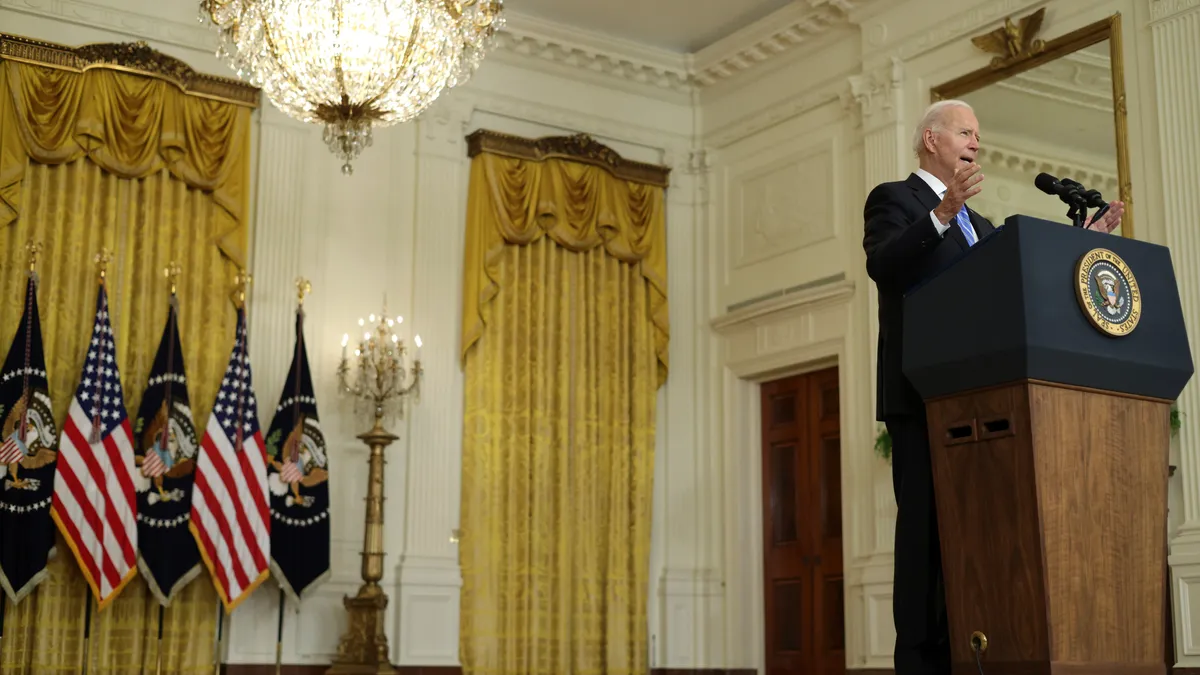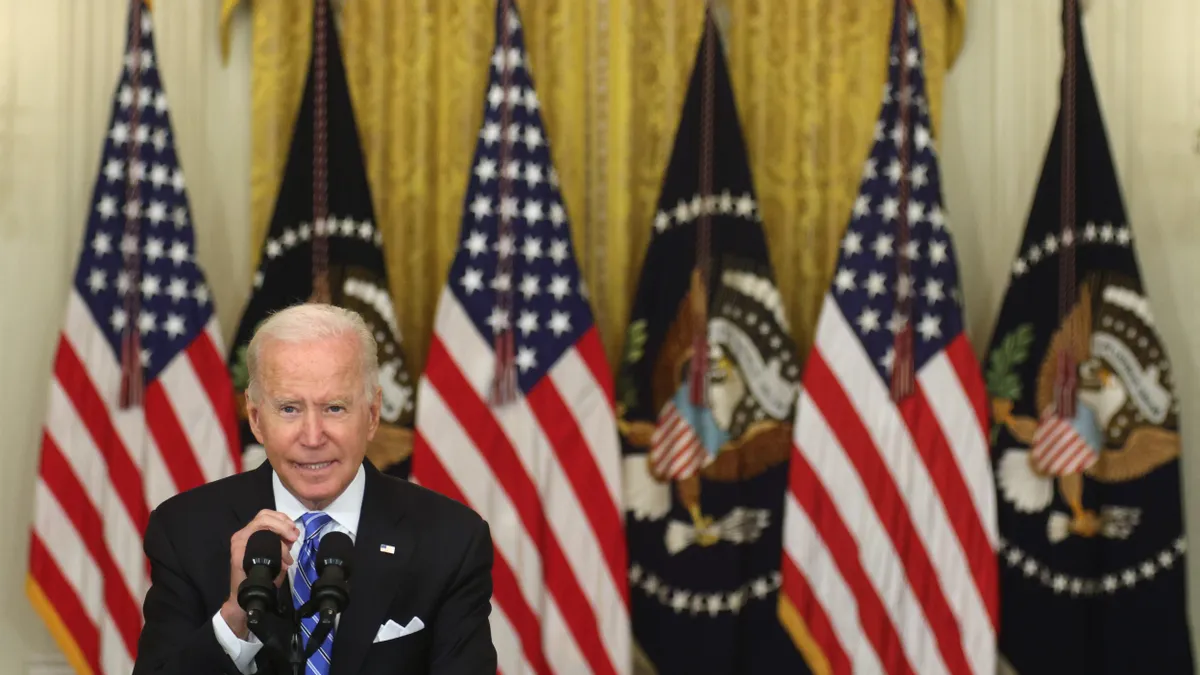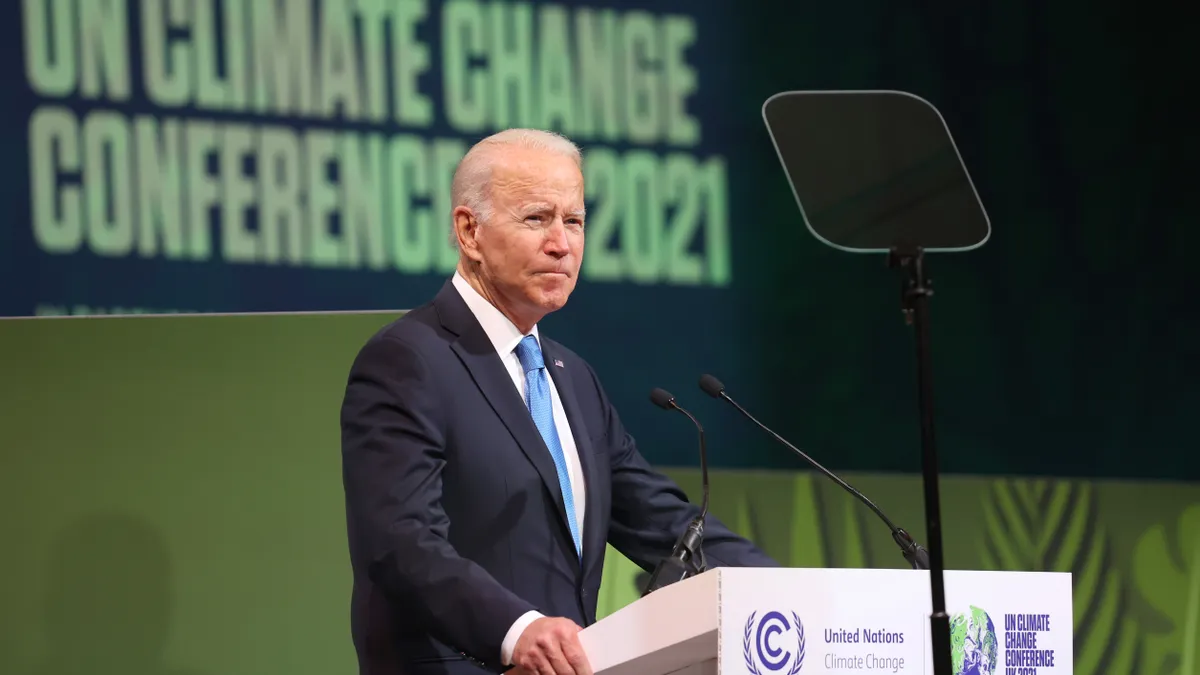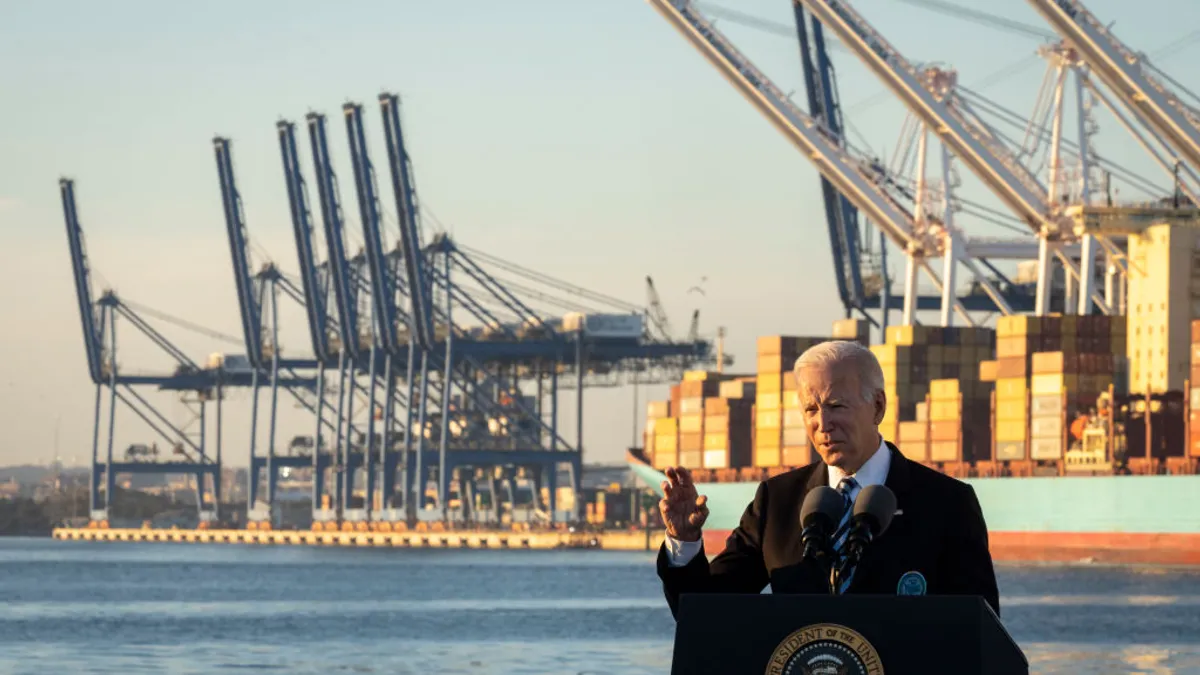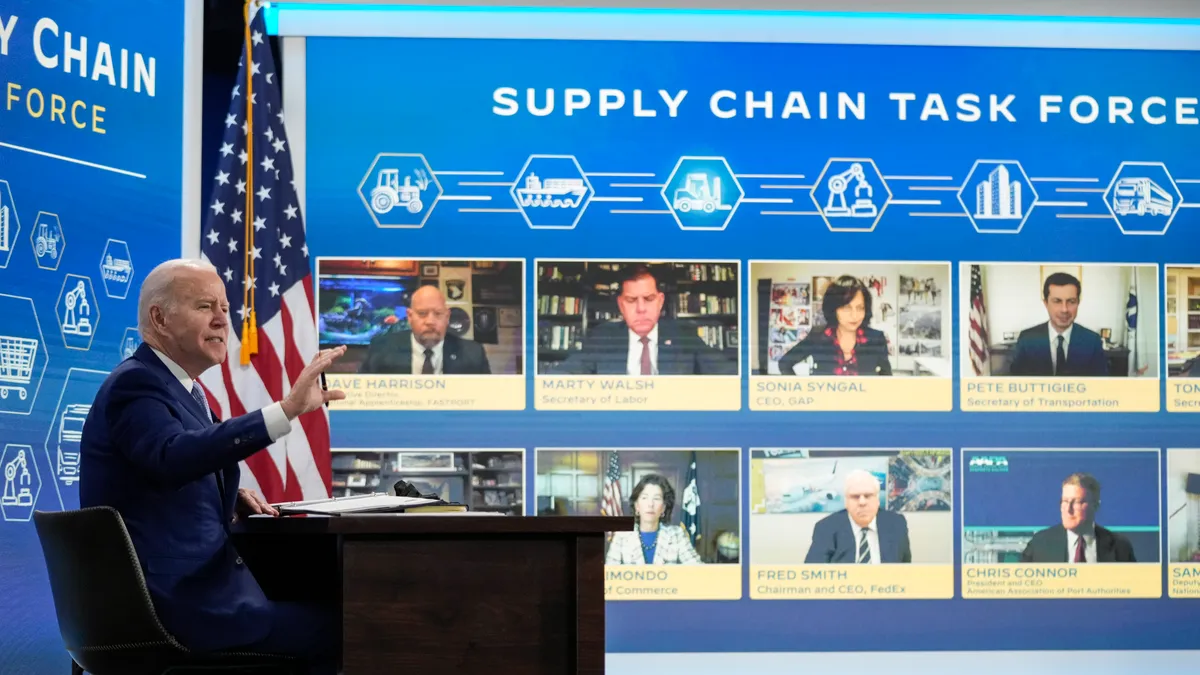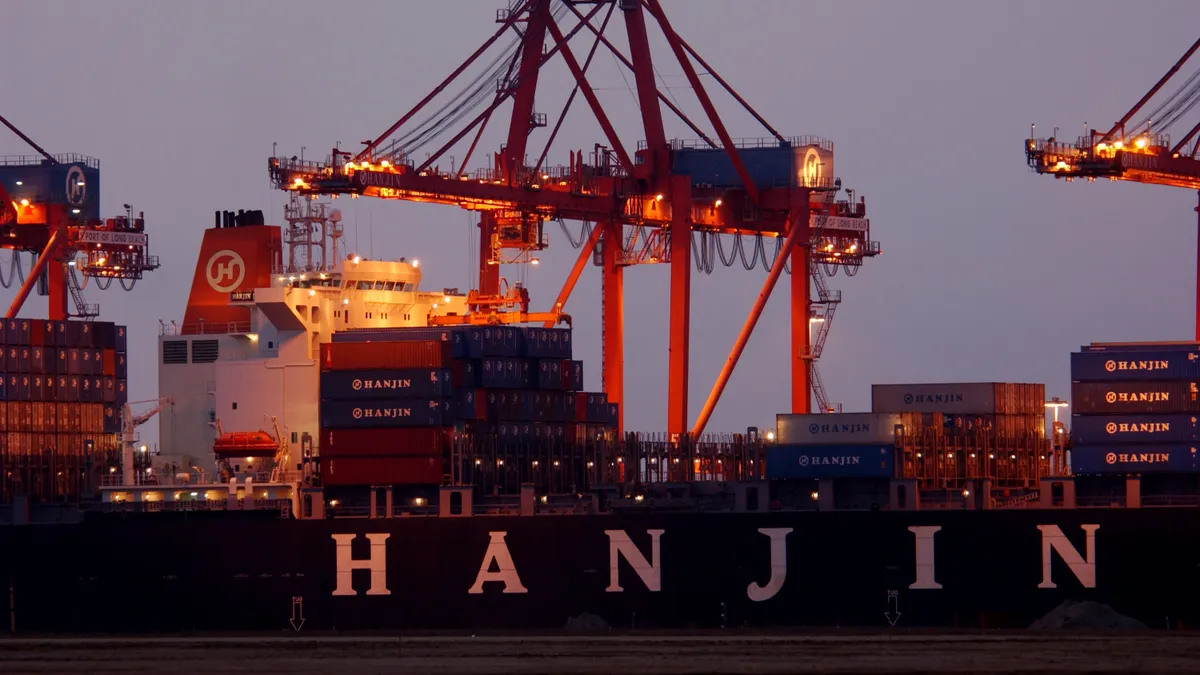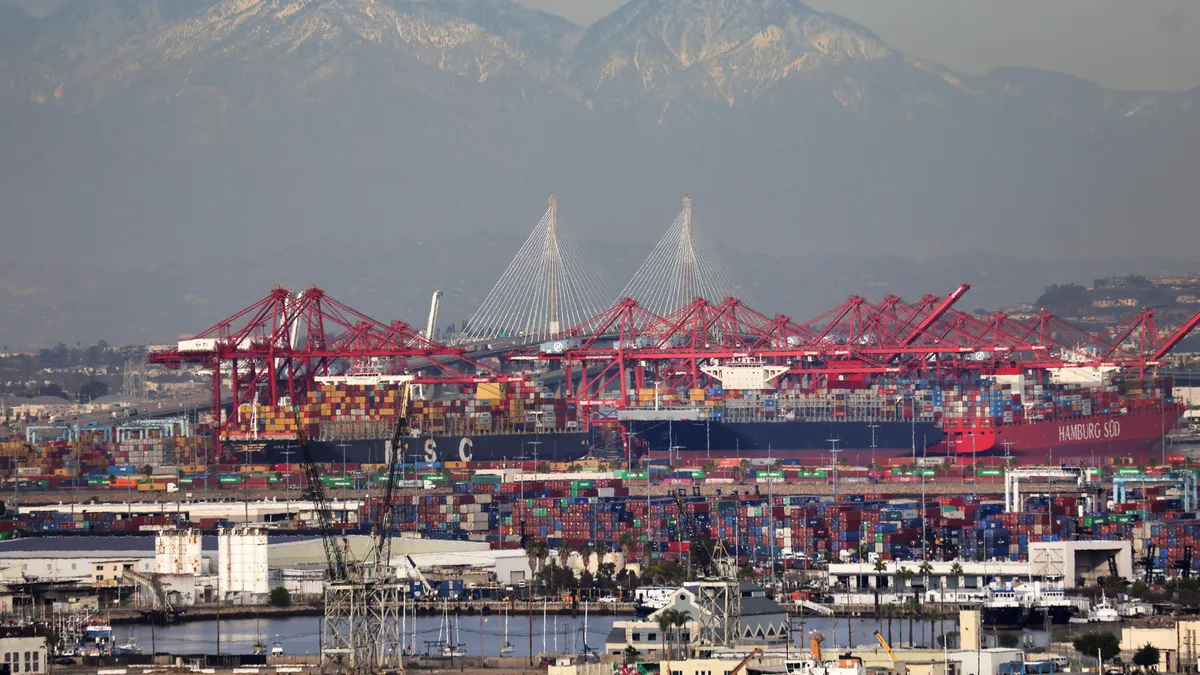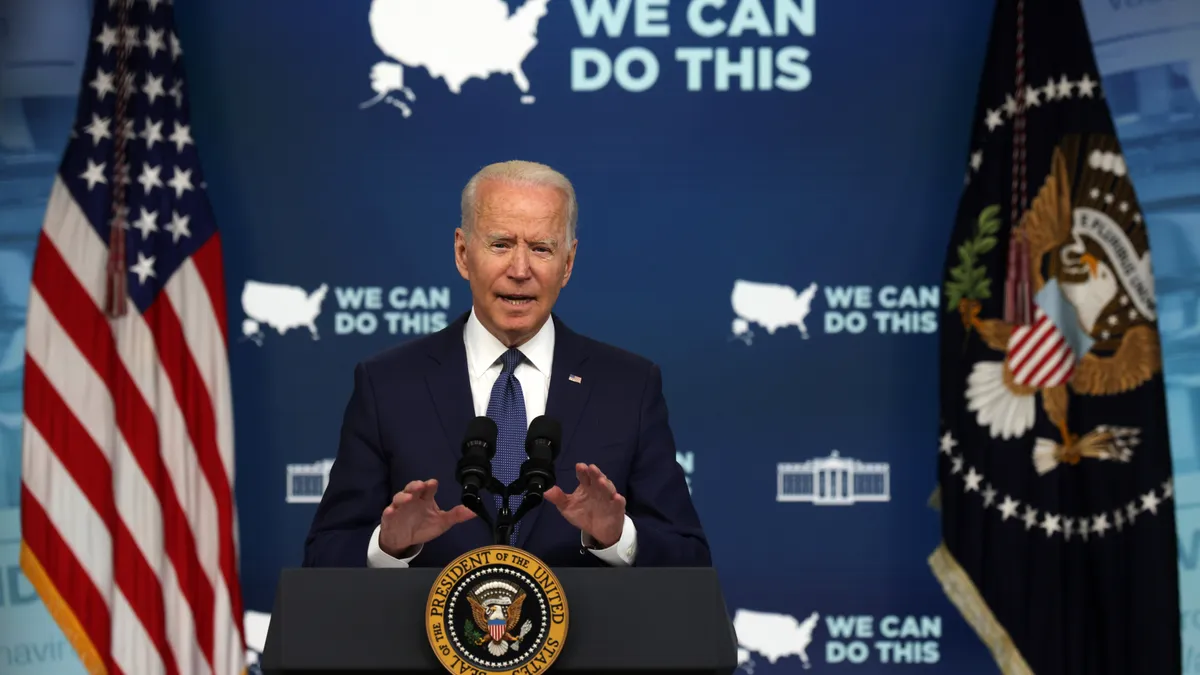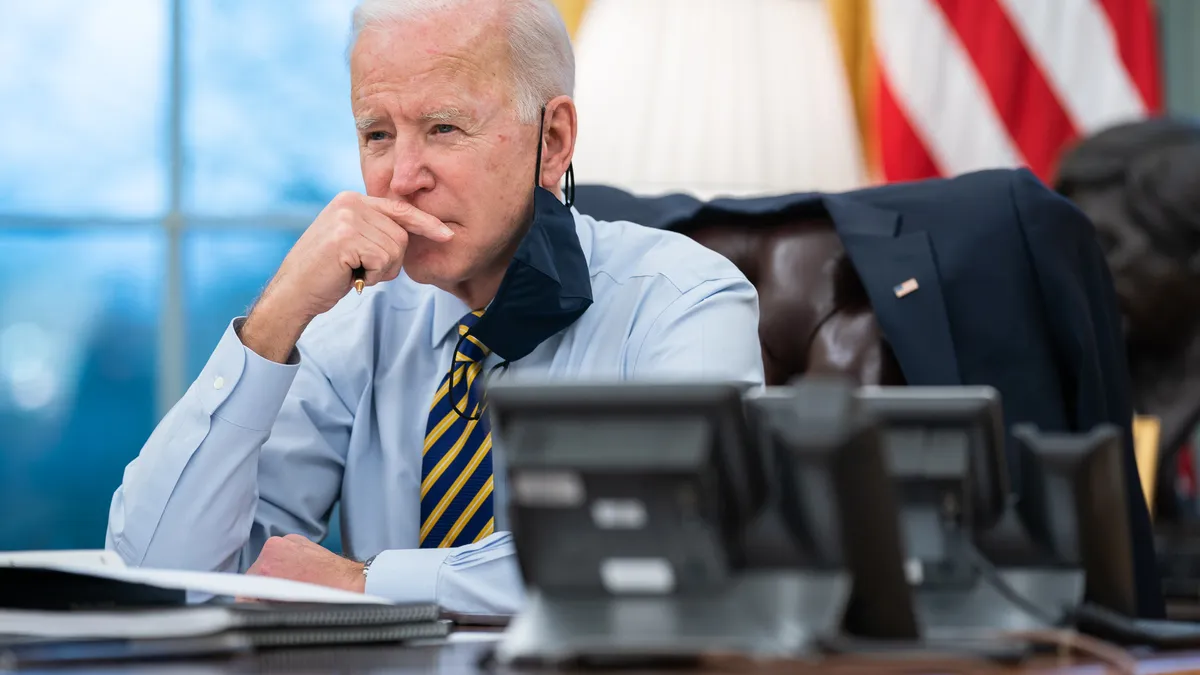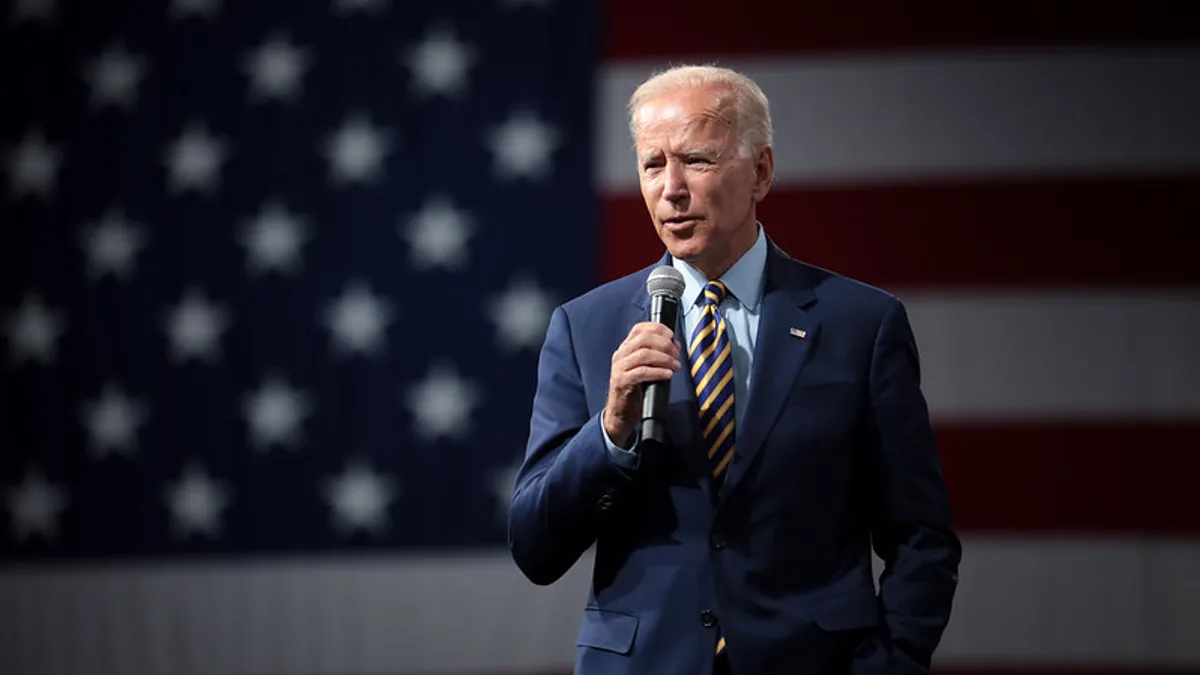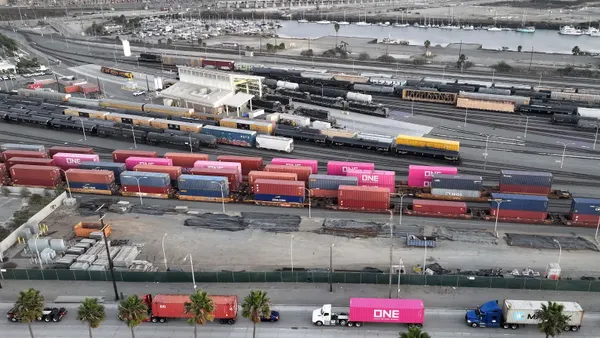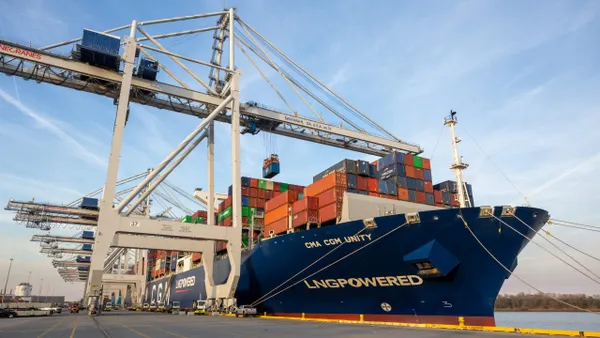President Joe Biden said experts from his administration believe port bottlenecks and the resulting price spikes will lessen as the economy improves. The administration is monitoring congestion at the Port of Los Angeles and Port of Long Beach, Biden said during Wednesday remarks on his economic agenda.
"My administration is bringing together the port operators, shipping lines, the labor unions, trucking companies, railroads, and others to speed up the port’s operations," he said.
Congestion at the nation's largest ocean gateways has been going on for nearly a year. Congestion issues have led to delays for shippers who have had to lengthen lead times and in some cases search for alternative import locations.
The top executives at the Port of Los Angeles and Port of Long Beach confirmed they were working with multiple agencies in the Biden administration to provide recommendations for how to improve container flow and lessen congestion. This work has included conversations with the Department of Transportation, the Department of Commerce, the Department of Labor, the Federal Maritime Commission and the National Economic Council.
"Many of the supply chain challenges [we are] witnessing were already occurring prior to the pandemic, but is now magnified due to our high cargo volumes," Mario Cordero, executive director at the Port of Long Beach, said in an email. "To deal with that, one of the solutions that will be explored is 24/7 operations, which is prevalent in high-performing markets in Asia."
Gene Seroka, executive director at the Port of Los Angeles, said there was a July 15 roundtable with DOT Secretary Pete Buttigieg that "gave us an opportunity to talk about the basic state of play, and more importantly, what solutions we had to recommend."
Seroka said he provided the secretary an outline of the four areas the port is working on currently and five longer-term recommendations.
The short-term recommendations that The Port of Los Angeles is focused on include:
- Creating incentives for driving down turn times for trucks, improving dual transitions
- Improving visibility with data tools like the port's Signal or Horizon forecasts
- Working with the FMC to pilot improved detention and demurrage using the facility's Port Optimizer tool, and to create a data standard for tracking the issue
- Figuring out how to better use capacity, as just 30% of truck appointments use nightside gates
Seroka's long-term recommendations for the administration include:
- Continued meeting with stakeholders through Federal Advisory Committee Act meetings can help to ensure that the government treats the stakeholders as a multi-modal freight environment and not a siloed ecosystem.
- The creation of a national port information sharing system, which is an effort that Seroka has championed for years at this point.
- Seroka told the administration that tariffs are hurting businesses, specifically the fees on chassis that ports need to increase pool capacity.
- A workforce training center that would cost about $140 million for workers to get training and accreditation in jobs the community needs.
- Shift the share of infrastructure investment to provide increased funds to the West Coast. "We have been out invested 11 to one by the federal government in the United States over the last 10 years, compared to the eastern and Gulf ports," he said, adding that when an infrastructure bill passes the "appropriators need to invest where it will have the greatest impact on the American economy."
When it comes to infrastructure priorities, Cordero said that Long Beach is investing $1.6 billion in strategic projects over the next 10 years and that the biggest part of that investment will be a $870 million on-dock rail project.
Seroka said that on-dock rail is his first priority for the infrastructure funds at the Port of Los Angeles. This is to be followed by rail and road connectors to ease congestion in those modes, and then "funding on a multi-modal freight system that will take into account the president's executive order on how we're doing this connectivity plan."
Some of the money that has been put aside for broadband in the infrastructure bill could be used for the nationwide port information sharing system. And money set aside for resiliency could be used to modernize electrical systems to ensure they have the ability to power electric vehicles used in the facility, he said.
Seroka said the communication and collaboration from the Biden administration is heartening and the agencies have made clear they want to help to advance these initiatives. The administration can provide some of the influence and muscle needed to get some of these efforts underway, specifically the digitization efforts, he said.
Cordero said these conversations extend down to state and local governments as well with the governor's office in California planning to bring stakeholders together for meetings next month to talk about "immediate and long-term solutions needed to address supply chain constraints."
The outreach from the Biden administration reminds Seroka of the efforts made by the Obama administration to work more closely with ports. When the port was going through labor negotiations Obama sent Labor Secretary Tom Perez to help bring the sides together. The convening power of the federal leaders can have an important impact, he said.
"In the Trump administration, we had trouble reaching mid-level career folks," he said. "That was four years that went by without much activity on the port side."



